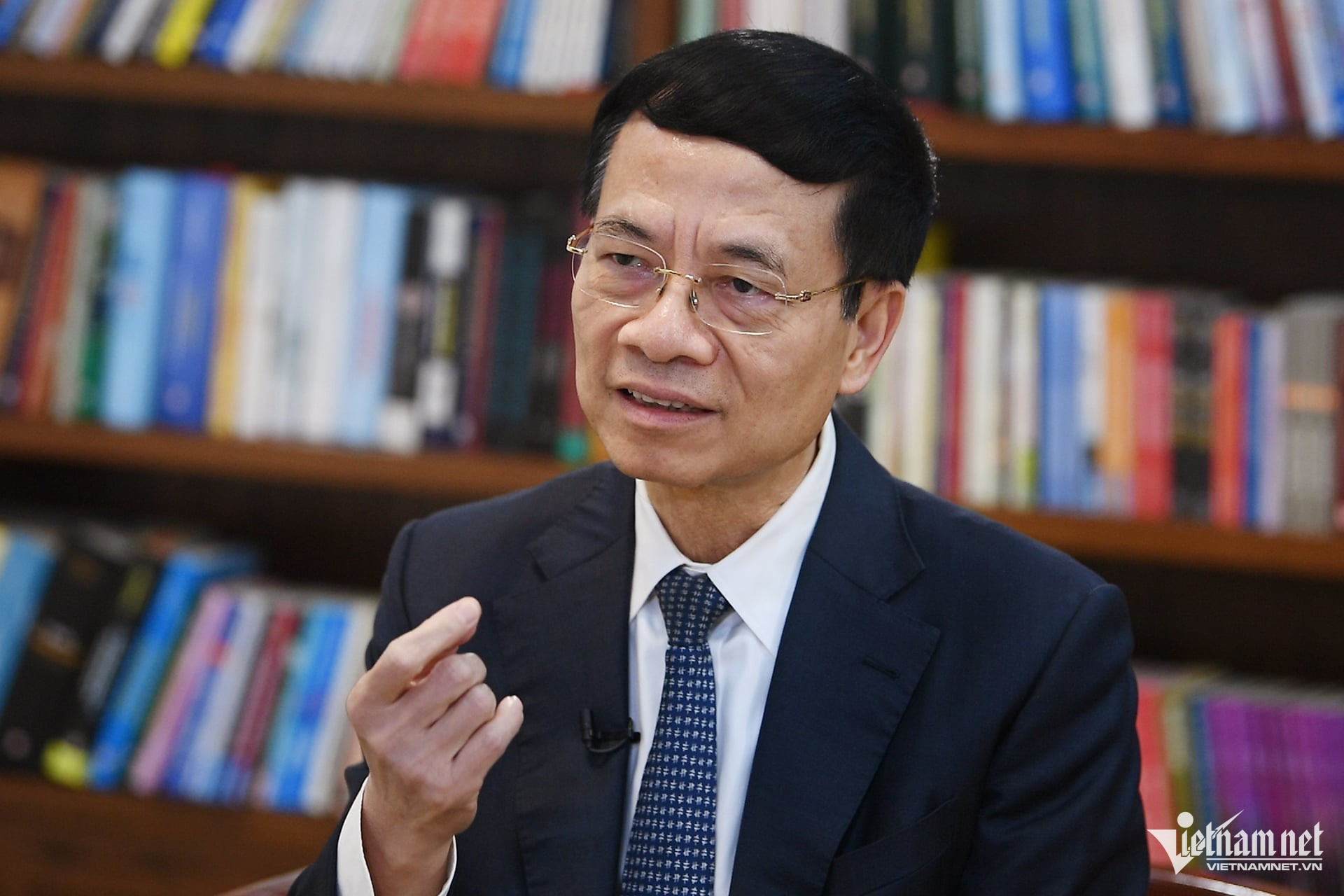
Part 1: Vietnamese enterprises need to master strategic technologies: minister
Part 2: Accepting risks in scientific research
Resolution 57 also refers to the public-private partnership model, meaning cooperation with enterprises in building digital infrastructure and key national lab facilities, and developing technologies and applications.
For state-owned enterprises, our hope is that this economic sector will lead in digital transformation as an example and guide for other enterprises.
There are three clear benefits from requiring state-owned enterprises to pioneer digital transformation, including better management within the enterprises, transparency in operations, and avoidance of mishaps like embezzlement and corruption.
Since state-owned enterprises are large and make up 30 percent of the economy, when this economic sector spends on digital transformation, it will create a digital transformation market.
For small and medium non-tech enterprises, the state will have a support program for their digital transformation. Currently, SMEs (small and medium enterprises) have to spend their own money to digitize, but they will receive state support in the future.
The support could be in cash, enabling them to purchase services from technology enterprises, or the state could buy services from technology enterprises, creating platforms for SMEs to use free of charge.
When designing the action plan to implement Resolution 57, we've have added the subjects to support, including 5 million business households, farmer households, and cooperatives.
Moreover, enterprises will benefit when the state invests in developing scientific and technological infrastructure, such as research labs, which private enterprises are also allowed to use. This is a new point in the action program.
While Khoan 10 Resolution (household contracting) in the past gave land to farmers, Resolution 57 assigns the task of researching strategic technologies to large enterprises. What benefits will small and medium technology enterprises expect from Resolution 57?
When mentioning scientific research, we usually mean scientists, and we support them with funding their research projects and giving infrastructure for research. When we talk about technology, large enterprises are given strategic technologies, regardless of whether they are private or state-owned.
As for small and medium technology firms, they can get two benefits.
Firstly, when large enterprises master strategic technologies with full or partial state budget capital, the results have to be partially opened to SMEs. This means that SMEs don't have to conduct their own research and investment but can utilize and grow from the discovered technologies.
We can also require large enterprises to open up technologies to others by creating technology platforms, turning technology into a service to provide at a reasonable cost to SMEs.
For instance, a company given the task of mastering AI technology could transform AI technology into an AI service. Then, small technology firms will not have to invest VND100 billion to develop the technology, but they can buy the service from large enterprises at VND500,000 a month and develop apps based on the technologies.
Secondly, Resolution 57 clearly states that the state will prioritize to buy products and solutions developed by Vietnamese enterprises. SMEs, which create many applications, will benefit from the public procurement regulations.
We strive to have at least 100,000 digital technology companies by 2030, with four types of enterprises, including large enterprises developing core technology; IT companies mastering digital transformation technology; enterprises developing digital transformation applications; and enterprises implementing digital transformation. Among these, the majority will be small enterprises implementing digital transformation.
If we want to turn digital transformation and the application of science and technology into a national revolution, no one can do it except small and medium-sized technology enterprises, not large enterprises like Viettel or FPT.
Currently, many large enterprises still engage in minor projects. This is because they lack significant tasks. With Resolution 57, when assigned significant tasks like mastering AI technology, they will no longer have the time or personnel for minor tasks. Then, large enterprises will cede the current works to smaller units.
You have repeatedly stressed that Vietnam won’t be a developed country without self-reliance, self-confidence and self-sufficiency. Could you please elaborate on this?
The Vietnam International Defense Exhibition in December 2024 showcased a missile manufactured by Vietnam.
Two-thousand Vietnamese tech firms have revenue from foreign markets.
In the last five years, the proportion of Vietnamese value in the digital technology industry has increased from 21 to 32 percent and the figure is expected to reach 50 percent by 2030.
With 74,000 digital technology businesses in a country of 100 million people, Vietnam is among the countries with the highest ratio of digital technology businesses per capita among developing countries.
Van Anh